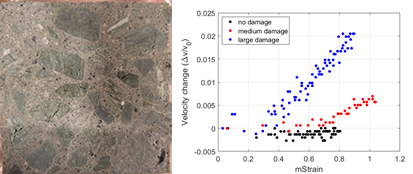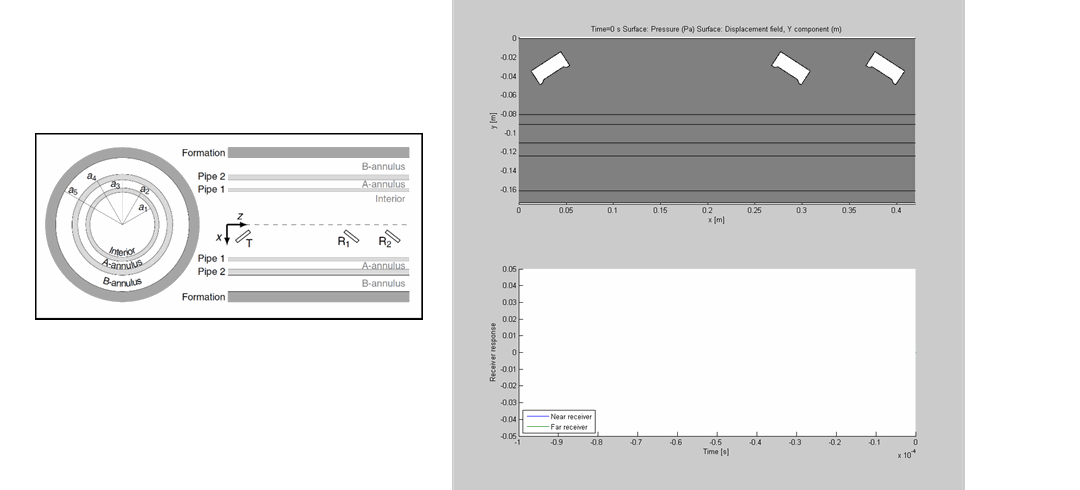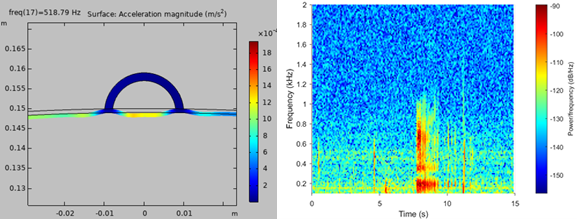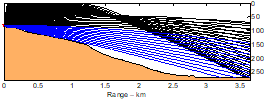
The Acoustics group work closely together with industry and academia to solve the most challenging problems through research and development - using acoustic and ultrasound methods. Applications range from underwater acoustics, health monitoring, to non-destructive testing and integrity monitoring. We work on improving the understanding of processes and methods based on theoretical analysis, signal processing and numerical modelling as well as the development of sensors. To achieve the best results on the forefront of research, we work in close cooperation with the wider SINTEF and with external partners like NTNU.
Knowledge and experience
- Sound propagation in any media – including confined spaces like subsea pipe structures, shallow waters etc.
- Transducers and transducer arrays
- Signal processing
- classical methods – single channel and arrays
- machine learning including hybrids with physical modelling
Tools for analytics and modelling
- Matlab (signal analysis and processing)
- Python (signal processing, machine learning)
- Comsol (detailed physical modelling by finite elements)
- Numerous software for focused tasks, e.g.
- PlaneRay (underwater acoustic sound propagation)
- MCRoomSIM (room impulse response simulation for array processing)
Lab facilities
- Sensors/instruments: Signal sources, transducers, recording devices
- Water tankfor underwater acoustics
- Norwegian P&A Laboratories - with NORCE, NTNU and UiS.
Ultrasound pipe inspection system with ultrasound array hosted by our group - OceanLab - Large scale experimental facility in Trondheimsfjorden managed by NTNU and SINTEF Ocean, and covering sensor buoys, autonomous vehicles, underwater acoustic communication, etc.
Application areas and examples
Non-destructive testing
NDT is an extensive and important research field for us. Present and recent activity examples:
- Subsea well integrity: Ultrasonic evaluation of concrete behind steel casings, e.g. for Plug and abandonment of depleted oil and gas wells.
- Condition monitoring of concrete in bridges: Nonlinear ultrasonic measurement methods.
- Condition monitoring of reinforced polymer shells
- Ultrasonic monitoring of bolt and nut connections
Nonlinear ultrasound under strain variation shows promising results on detection of micro-cracks in concrete. Cracks in concrete due to chemical and or mechanical processes are a danger for the integrity of concrete structures. Detecting such damage early on is therefore important. We work on techniques measuring the non-linear component of ultrasound signals under changing strain conditions. The variations of the non-linear component of the signal can be linked to the damage extent in the concrete sample.

Plug and abandonment of offshore oil and gas wells will be highly important, technically and economically, in the coming decades. We work on different projects using ultrasound to evaluate the integrity/bonding of materials surrounding the pipes.

Monitoring of human health
The human body produces many sounds, the beating heart, the breathing lungs or the rumbling stomach. We work on different projects developing acoustic sensors and algorithms to reliably detect and identify sounds from the human body. Worth to mention is the cooperation with NTNU Artificial Pancreas group. Our work share is covering the development of a sensor to listen to bowel sounds. Before building the sensor, we optimize the design using COMSOL modelling. Classical signal processing helps to identify key features of the signals of interest.

Underwater acoustic communication
Beyond ranges of a few 10ths of meters, the main technology for wireless communication under water is acoustics. This poses several challenges with regards to range, bandwidth, stability and latency of communication systems. We carry out research on physical understanding and efficient solutions for acoustic communications. Availability of such technology will be vital for the increasing but sustainable exploitation of ocean resources that will imply robotics and autonomy to a large extent. Multidisciplinary cooperation is essential in this field. Key partners include the Wireless communications group of our department, NTNU Acoustics and SINTEF Ocean. The latter is providing hydrodynamical modelling expertise and software that significantly extends our capacity.


Contact
Tor Arne Reinen (Underwater acoustics)
Tonni F. Johansen (Non-destructive testing)
Anja Diez (Non-destructive testing)
Viggo Henriksen (Modelling and simulation)
Read about more research areas
Acoustics Research Centre
Environmental acoustics
Communication acoustics
Acoustics in buildings
